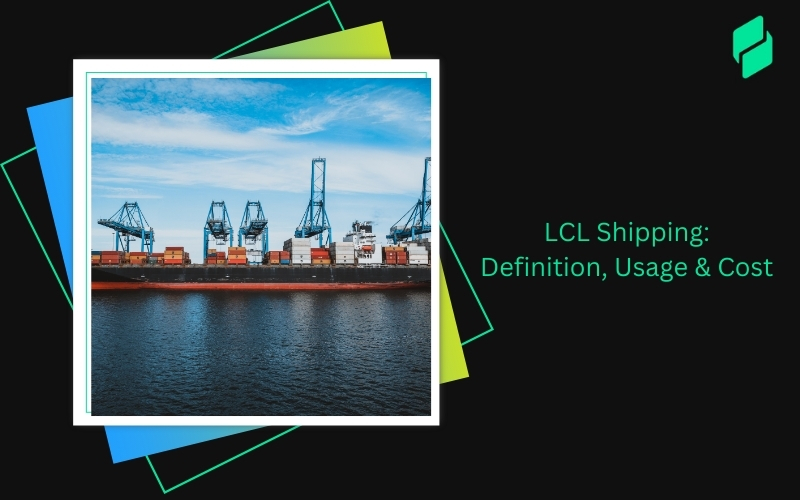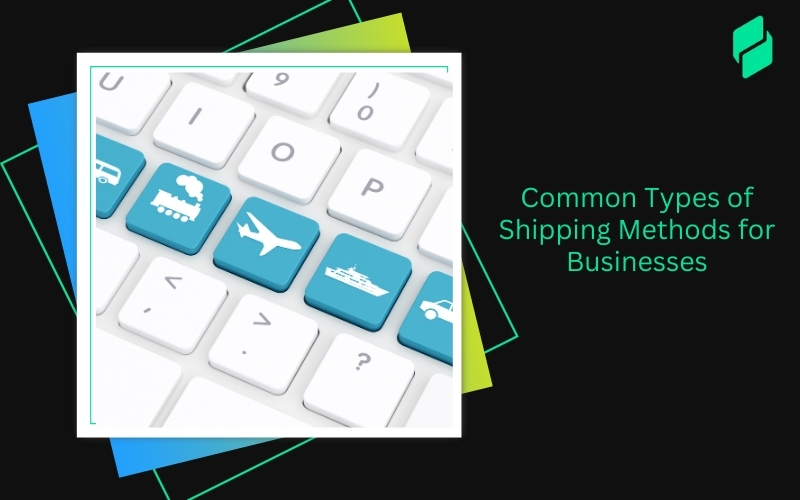Optimize your business: use unlimited savings with Pazago fulfilled now!
Get Started ->Did you know that the pharmaceutical industry in India accounts for over $24.59 billion in exports annually? As one of the world's largest suppliers of generic drugs, India plays a pivotal role in ensuring patients globally receive life-saving medications. But managing this intricate supply chain is no simple feat. The journey of a single pill, from its production line to a pharmacy shelf, involves a complex web of processes, regulatory standards, and logistical hurdles.
The stakes are incredibly high for exporters and importers. Delays, compliance failures, or compromised quality in the supply chain in the pharma industry can lead to financial losses and, more critically, impact patient safety. Understanding pharmaceutical supply chain management fundamentals is crucial for overcoming these challenges and ensuring efficient operations.
Let's explore the essential components of the supply chain in the pharma industry and address the challenges of effectively managing this vital supply chain.
Key Stakeholders in the Pharmaceutical Supply Chain

The supply chain in the pharma industry is not simply a sequence of transactions—it's a collaborative network involving multiple players. Each stakeholder contributes to the smooth production, distribution, and delivery of medicines.
- Raw Material Vendors: These vendors supply active pharmaceutical ingredients (APIs), often imported from countries like China. Ensuring quality at this stage is vital, as substandard materials can disrupt the entire chain.
- Pharmaceutical Manufacturers: Manufacturers transform raw materials into finished products under strict quality controls. They must adhere to international regulatory standards, particularly for exports to countries like the US and EU.
- Regulatory Bodies: Agencies such as the USFDA, EMA, and CDSCO ensure compliance with safety, efficacy, and quality standards. Exporters must meet these requirements to avoid shipment rejections or penalties.
- Distributors and Wholesalers: These intermediaries connect manufacturers with pharmacies and healthcare providers. They ensure timely delivery, especially for temperature-sensitive products.
- Logistics Providers: Transporting pharmaceuticals requires expertise in handling sensitive products. Logistics providers maintain product integrity, handle customs, and prevent delays.
- Pharmacies and Healthcare Providers: The final stage involves dispensing medicines to patients. Proper storage and handling at this level ensure the products remain effective.
Understanding the stakeholders sets the stage for taking a closer look into the processes they manage. Here's how the supply chain in the pharma industry functions from start to finish.
Also Read: What is Supply Chain Management and Its Importance - A Pazago Guide
How the Pharmaceutical Supply Chain Works

The pharmaceutical supply chain is a carefully orchestrated sequence of steps that ensures medicines are delivered safely and efficiently. Understanding these stages is crucial for exporters and importers to handle the complexities of the global pharmaceutical market.
- Sourcing Raw Materials
The journey begins with sourcing active pharmaceutical ingredients (APIs) and excipients, which form the core of any drug. India is a major global hub for pharmaceutical manufacturing, but a significant portion of APIs is imported, particularly from China. This dependence on external vendors makes quality control and supply reliability critical.
- Manufacturing and Quality Control
Once raw materials are procured, they are processed into finished pharmaceutical products. This stage involves strict quality control measures, including adherence to Good Manufacturing Practices (GMP). Indian manufacturers exporting to countries like the United States or the European Union must meet stringent regulatory standards to maintain market access.
Key steps during manufacturing include:
- Formulation Development: APIs are combined with excipients to create the final product.
- Batch Testing: Each batch undergoes extensive testing to ensure it meets quality standards.
- Packaging: Finished products are packaged in a way that ensures stability and compliance with international labelling requirements.
- Distribution and Logistics
This stage connects manufacturers with wholesalers, distributors, and pharmacies. The distribution process must ensure that products reach their destinations without delays or damage. Maintaining cold chain integrity is paramount for temperature-sensitive medicines. A minor temperature change can compromise a drug's efficacy.
Key logistical considerations include:
- Storage: Proper warehousing with controlled environments.
- Transport: Specialized vehicles and containers for sensitive shipments.
- Customs Clearance: Efficient handling of documentation to prevent delays at borders.
Cut through the paperwork hassle with Pazago—accurate, fast, and error-free documentation every time.
- Regulatory Compliance
Every shipment must comply with the regulatory standards of the destination country. This involves proper labelling, documentation, and adherence to safety guidelines. Missing these requirements can result in shipment rejection, financial losses, or even bans on future exports.
- Delivery to Pharmacies and Healthcare Providers
The final stage is delivering the products to pharmacies, hospitals, or healthcare facilities. Distributors and pharmacies ensure that medicines are stored and handled correctly before reaching the patient. For exporters, building trust with these end-stage players is vital for sustaining market presence.
This straightforward process is easier said than done, thanks to the many challenges involved.
Also Read: Supply Chain Management Systems: Operations and Importance
Key Challenges in Pharmaceutical Supply Chain Management

Managing the pharmaceutical supply chain involves some unique hurdles. These challenges often test the resilience of exporters and importers, especially in a competitive global market.
- Dependence on Limited API Sources: India imports a significant portion of its APIs from China. This heavy reliance makes the supply chain vulnerable to geopolitical tensions, trade restrictions, or pandemics.
- Maintaining Cold Chain Integrity: Many medicines require strict temperature control. Any lapse in maintaining the cold chain during transit can compromise the efficacy of the drugs.
- Counterfeit Drugs: The infiltration of counterfeit medicines poses serious risks to patient safety and damages brand reputation. To overcome this threat, exporters must invest in traceability measures.
- Regulatory Complexity: Different countries have their own specific compliance rules, and keeping up with them isn’t always easy. Missing a step in these regulations can quickly cause delays and add extra costs.
- Demand and Inventory Management: Fluctuating demand and inaccurate forecasting can result in overproduction or stock shortages, affecting supply chain efficiency.
The key to overcoming these challenges is in applying the right strategies at the right time.
Also Read: Key Challenges and Solutions in Supply Chain Management
Strategies to Address Pharmaceutical Supply Chain Challenges

Overcoming pharmaceutical supply chain challenges requires smart planning and strategic decisions. Here are practical ways exporters and importers can tackle common issues effectively.
- Build Diverse Vendor Relationships
Depending on a single supplier for active pharmaceutical ingredients (APIs) is risky. Working with multiple vendors across different regions reduces supply chain disruptions. Work with suppliers in countries offering stable trade agreements. This ensures a steady flow of APIs and avoids over-reliance on any one nation.
- Upgrade Cold Chain Systems
Temperature-sensitive products require advanced logistics. Cold chain technology keeps medications safe during transport and storage. Invest in real-time temperature monitoring systems. These tools help detect issues early and protect products like vaccines and biologics from spoilage.
- Strengthen Anti-Counterfeit Efforts
Counterfeit drugs put safety and trust at risk. Tracking and verifying products can help tackle this problem. Serialization assigns unique IDs to each product, while QR codes and blockchain ensure they're genuine and easy to trace.
- Adopt Supply Chain Digitization
Digital tools enhance visibility and accuracy. They help companies manage logistics more efficiently and predict market trends. Technologies like AI improve demand forecasting. Blockchain secures shipment records, while IoT enables live tracking for better oversight.
- Collaborate with Regulators
Clear communication makes compliance easier to manage. Partnering with regulators ensures smoother approvals and builds market trust. Stay informed about global standards like GDP. Timely certification helps avoid costly delays in exports.
- Strengthen Logistics Networks
Reliable logistics partners and backup plans reduce risks. Transportation delays can disrupt the entire supply chain. Choose freight companies experienced in pharmaceutical shipments. Explore alternate routes to minimize the impact of unexpected delays.
- Optimize Forecasting and Inventory
Accurate demand predictions prevent overproduction and shortages. Data-driven insights allow businesses to adjust production to match market needs. Use tools that track global sales trends. This helps maintain optimal inventory and avoids wastage due to overstocking.
Addressing challenges is crucial, but staying updated on emerging opportunities is just as important.
Manage orders, quality, logistics, insurance, and payments — all with Pazago, your all-in-one digital platform.
Also Read: Transforming Business Strategy with Advanced Supply Chain Solutions
Trends and Opportunities in Pharmaceutical SCM

The pharmaceutical supply chain is rapidly changing, driven by new technologies and shifting market demands. Exporters and importers must keep up with these trends to stay competitive and capitalize on new opportunities.
- Adoption of Sustainable Practices
Sustainability is gaining traction across industries, and the pharmaceutical sector is no exception. Companies are exploring eco-friendly packaging, reducing carbon emissions in logistics, and optimizing supply chain operations to minimize environmental impact. Investing in sustainable solutions not only helps the planet but also enhances a company's reputation among global partners.
- Rise of Predictive Analytics
Data analytics is transforming the way businesses predict demand and manage inventory. By looking at past data and keeping an eye on market trends, companies can predict changes in demand and accordingly adjust their production schedules. This approach reduces waste and ensures a steady supply of medicines, even during sudden market shifts.
- Growth of Digital-First Supply Chains
The pandemic accelerated the shift toward digitization in supply chain management. Technologies like blockchain, AI, and IoT are helping companies improve visibility, track shipments in real-time, and ensure product authenticity. Digital-first strategies enable exporters and importers to respond faster to disruptions and enhance operational efficiency.
- Focus on Cold Chain Innovations
As the demand for temperature-sensitive products grows, advancements in cold chain logistics are critical. Companies are investing in technologies like thermal sensors, smart packaging, and AI-driven monitoring systems to maintain product integrity. These innovations help meet stringent global standards and reduce the risks of temperature excursions during transit.
- Increased Emphasis on Collaboration
Collaboration between stakeholders—manufacturers, suppliers, logistics providers, and regulators—is becoming essential. Strong partnerships improve coordination, reduce delays, and simplify regulatory compliance. Regular communication and joint problem-solving foster trust and create opportunities for long-term success.
- Expansion into New Markets
Indian pharmaceutical exporters are increasingly tapping into new and emerging markets. Expanding into countries with growing healthcare needs, such as Africa and Southeast Asia, presents significant opportunities for growth. Understanding the unique regulatory and logistical requirements of these markets is critical for successful expansion.
Turning these opportunities into actionable results often demands a reliable partner—Pazago provides just that with its tailored solutions for pharmaceutical supply chains.
Also Read: Top 10 Trends in Digital Supply Chain Management
Pazago: The Cure for Pharma Supply Chain Woes

Managing the pharmaceutical supply chain can feel overwhelming, but Pazago simplifies the process with its innovative solutions. Here's how Pazago can help exporters and importers simplify operations and ensure smooth global trade.
- Trusted Logistics: Easily compare and book competitive freight rates.
- Documentation: Pazago simplifies documentation, reducing errors and saving time. Accurate paperwork minimizes delays during customs clearance.
- Real-Time Tracking: Track shipments live through a global network of logistics partners, ensuring complete transparency and better decision-making.
- Enhanced Communication: Coordinate effortlessly with suppliers, traders, and logistics providers through a unified platform.
- Quality Inspections: Pre-shipment quality checks ensure products meet international standards, boosting trust and compliance.
- Integrated Finance and Insurance: Manage payments and secure insurance for international shipments in one place, reducing complexity and risks.
With Pazago, handling your pharmaceutical supply chain becomes simple, reliable, and stress-free.
Conclusion
The supply chain in the pharma industry is both a challenge and an opportunity for exporters and importers. With India leading the global market in generic drug exports, managing supply chain complexities effectively has never been more critical. Every step demands precision and strategy, from sourcing quality APIs to addressing logistical hurdles and ensuring compliance.
Success lies in staying ahead—adopting technology, building reliable partnerships, and using innovative tools. Solutions like Pazago can make this journey smoother, helping you simplify operations and focus on growth.
Discover How Pazago Works for You — Schedule a Demo!


.png)








